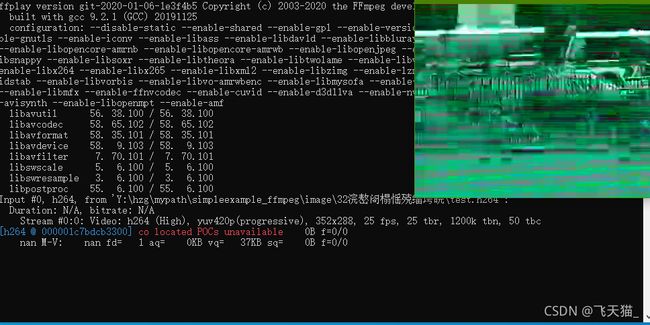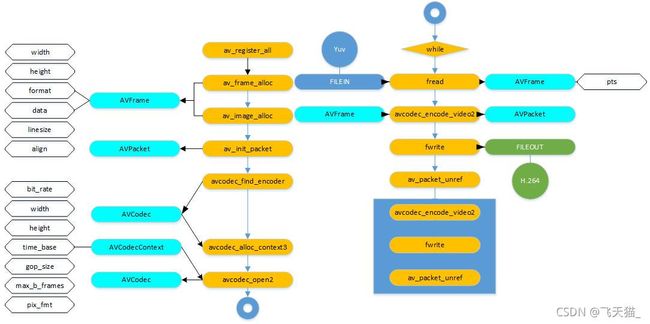FFMPEG 将YUV420P格式数据编码成H.264
FFMPEG学习 将YUV420P格式数据编码成H.264
- 前言
- 一、编码流程
- 二、代码实现
- 三、实现效果
- 四、总结
前言
在学习FFMPEG过程中,我们需要获取到H264码流,但是我们采集到的一般都是YUV格式的数据,这里记录一下,用FFMPEG将采集到的YUV数据编码成H.264码流的学习过程, 并把遇到的问题和心得总结一下。
一、编码流程
二、代码实现
/*---------------------------------------------------------
* 文件名:transfer.c
* 文件说明:实现YUV数据编码成H.264文件
* 作者:hzg
* 修改记录:
* 1、修改了申请图像内存的对其数值,由原来的32位对齐修改为16位对齐,解决了编码成H.264文件之后播放绿屏乱码问题
* 2、编码第22帧的时候,才开始将包置为1,编码延迟较久。疑似编码选项av_opt_set问题
----------------------------------------------------------*/
#include 三、实现效果
四、总结
实现的过程中遇到过问题,深入研究一下解决了一部分,还有一些后续跟进
Q1:刚编的时候发现我用的YUV数据流,编码之后播放是绿色的。如图

A1:这里查看了下,本身的源文件是150fps,但是实际编码帧数只有146fps,继续追踪发现在读取UV数据的时候,比实际源多了16个字节,再继续追踪,发现是因为在申请帧内存的时候采用的是32位对齐,在使用源为352*288的源的时候,UV数据都多了16字节,导致读取数据异常,编码也异常了。将内存申请帧的字节对齐修改为16位对齐就解决了。
Q2:看日志打印,在编码了22帧之后,才开始置位编码成功,got_packet_ptr置1。
A2:这里问题定义为编码延迟问题,通过设置preset参数可以在压缩效率和编码时间中做一个平衡,这里建议选择可以接受的最慢的值,这边尝试将 preset 由 slow 改为 ultrafast,编程了编码13帧才开始置1。这里并不是很满意,后面再继续研究。

